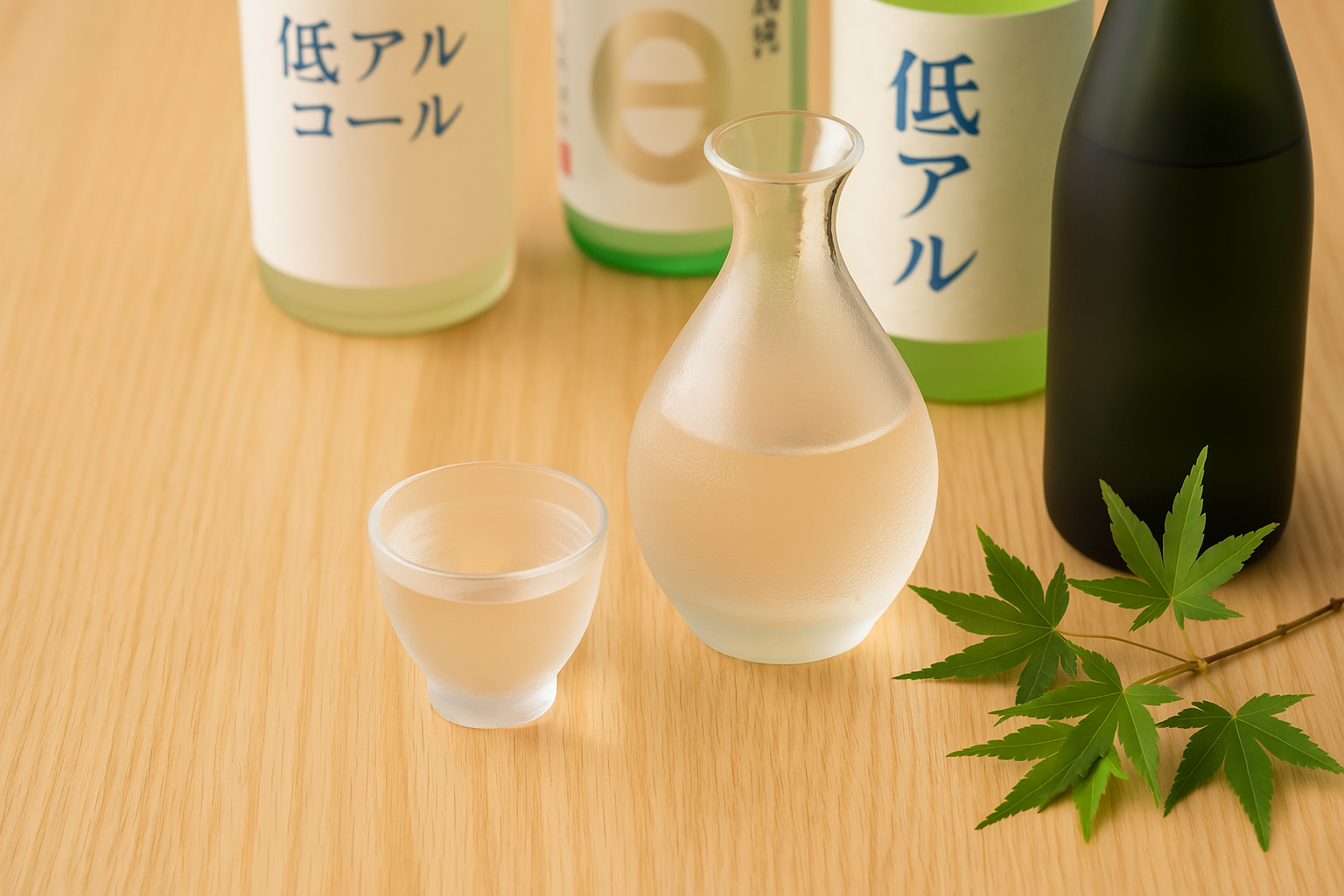Hello, this is Mana.
Have you been hearing the term “low-alcohol sake” more often lately?
In the past, sake was generally known for its high alcohol content, but that image is gradually changing.
This time, let’s take a closer look at the evolving world of sake—especially those known as “low-alcohol sake.” We’ll explore why it’s gaining attention, what kinds are available, and where to find them.
What Is “Low-Alcohol Sake” Anyway?
“Low-alcohol sake” generally refers to sake with an alcohol content of 13% or lower. Some even fall into the 5–8% range, which is about the same as beer or wine.
While traditional sake usually contains 15–16% alcohol, this is a big shift. These types are often lighter and easier to drink, making them more approachable for people who weren’t previously into sake.
Why Is It Gaining Popularity?
- Health Consciousness: Perfect for those who want to cut back on alcohol but still enjoy the flavor of sake.
- Popular Among Younger People & Women: Fruity flavors, cute labels, and smaller bottles—perfect for modern tastes.
- Casual Drinking Occasions: Great for picnics, at-home drinks, and even before or after meals.
It truly embodies the concept of “sake evolving with the times.”
What Types Are There?
Low-alcohol sake comes in various styles. Here are some popular types:
1. Sparkling Sake
Carbonated and refreshing like champagne.
Examples: Mio Sparkling (5%) and Suzune (4.5–5.5%) are perfect for celebratory moments.
2. Fruity & Sweet Types
Characterized by fruity aromas and gentle sweetness.
Recommended for beginners: Himezen (8%) and Fukunishiki Fu Junmai.
3. Low-Alcohol Junmai & Ginjo Types
Based on traditional brewing but with reduced alcohol.
Popular picks include Kamo Kinshu Tokubetsu Junmai 13 and Matsuzakari Hirusagari no Rendezvous.
4. Nigori Sake Types
Milky and creamy in appearance.
Sanuki Cloudy (6%) is a smooth and popular option.
How Is It Made?
Low-alcohol sake isn’t simply diluted with water. Various techniques are used in its production:
- Water Dilution: Adjusting alcohol levels by adding water post-fermentation.
- Fermentation Stop: Stopping the fermentation process midway.
- Yeast Selection: Using yeast that naturally produces lower alcohol content.
- Four-Stage Brewing: Techniques to bring out umami and sweetness.
For example, the Amefuri///Afuri series by Yoshikawa Brewery in Kanagawa is drawing attention as an “unpolished sake” with a 90% rice polishing ratio.
Where Can I Buy It? (Recommended Online Shops)
Curious about low-alcohol sake? Even if there’s no sake shop nearby, you can easily find it online with a wide variety available.
- SAKEguru
A specialized sake e-commerce site.
https://www.sakeguru.com/
Offers many low-alcohol options like “Himezen,” “Suzune,” and “Zokuso Horai Queen.” - IMADEYA Online Store
Known for its well-curated selection.
https://imadeya.co.jp/
Features artisanal picks like “Amefuri///Afuri” and “Izumibashi Natsu Yago 13.” - Rakuten, Amazon, Yahoo! Shopping
Major platforms for easy purchases.
Search for “low-alcohol sake” or brand names to discover many results like “Mio Sparkling,” “Fukunishiki Fu,” or “Sanuki Cloudy.” - KURAND
Strong in sake subscriptions and gifts.
https://kurand.jp/
Occasionally offers seasonal limited-edition low-alcohol sakes. - Brewery-Direct Online Stores
Check EC sites operated directly by sake brewers.
Examples: Izumibashi, Fukunishiki
Online shopping makes it easy to explore various types of low-alcohol sake from home, so you can take your time finding the one that best suits your taste.
Sake Evolution Beyond Low Alcohol
In fact, “evolving sake” goes beyond just lower alcohol content.
- Non-Alcoholic Sake: Like “Gekkeikan Special Free.”
- Flavored Sake: Expected to become even more popular.
- Sake Tourism: A new way to enjoy sake through experiences.
In Summary
Low-alcohol sake is a standout in the new wave of sake that aligns with modern lifestyles.
Its approachable flavor, charming design, and casual appeal make it a fun new way to enjoy Japan’s traditional drink.
Why not take this chance to try a bottle that piques your interest?
And maybe you’ll find your very own “go-to sake.”
Until next time—Mana 🍶


コメント